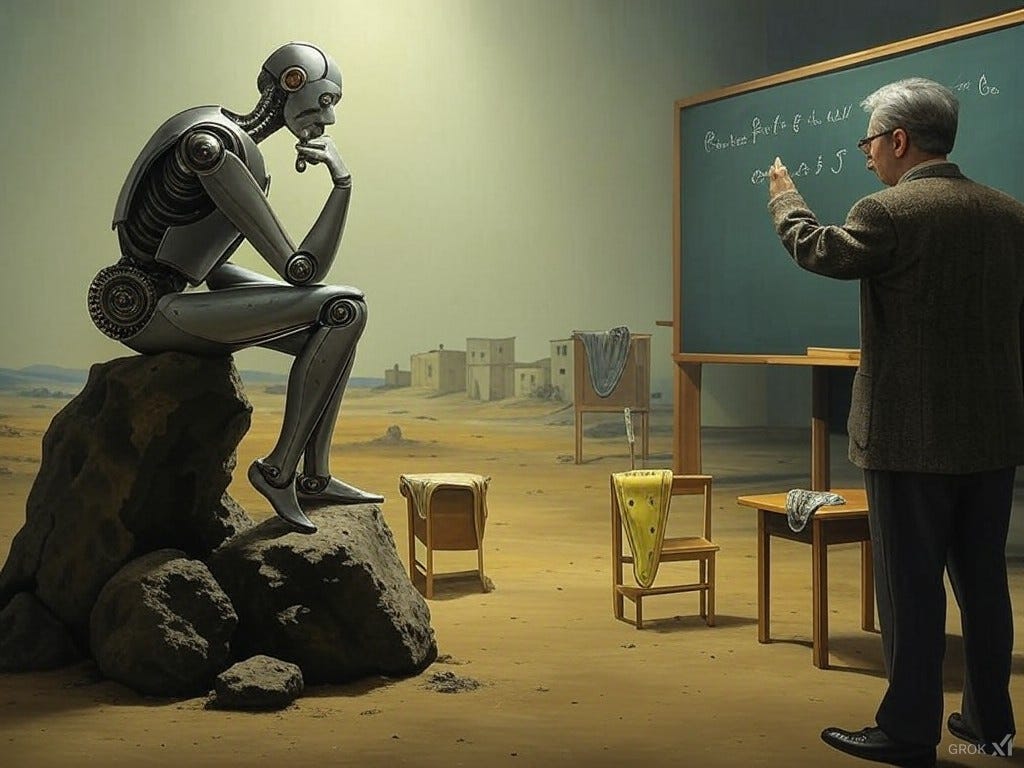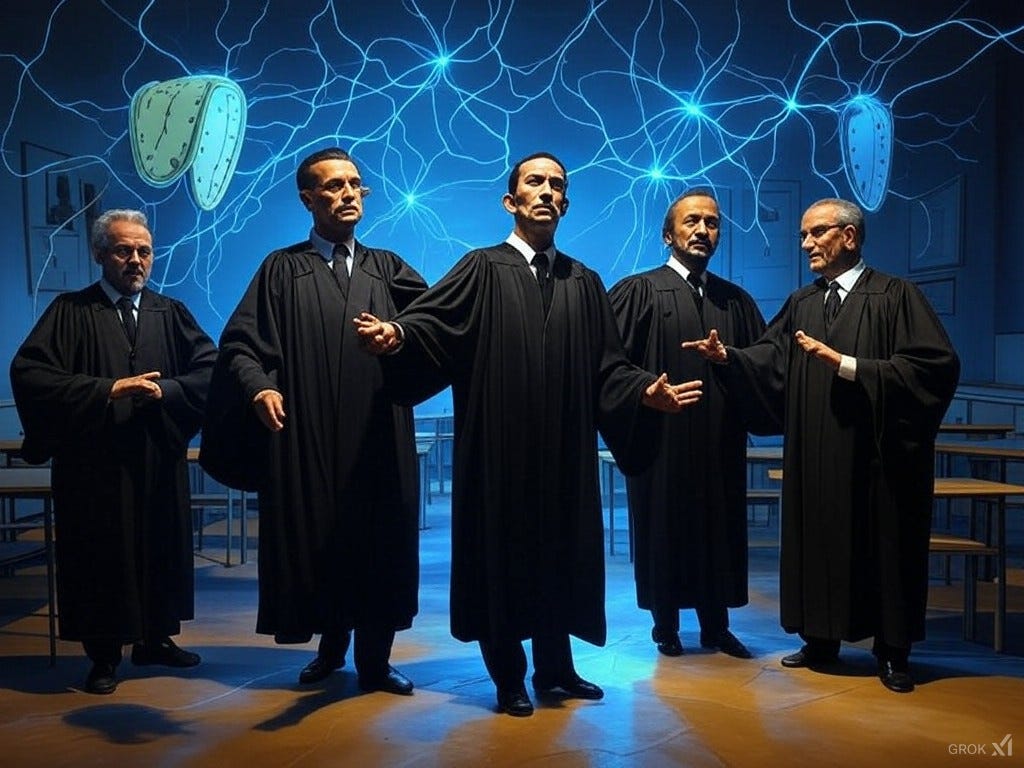An Android's Journey Through University: Understanding Neural Networks and the Transformer Block
Explaining the layers of neural networks and Transformers, and how hidden state vectors are created and enriched as they pass through these layers, ultimately to make a simple prediction.
Imagine an android, not just any machine but one designed to learn and interpret language. This android's journey through an educational system will help us unravel the mysteries of neural networks, with a special focus on the Transformer Block, one of the most revolutionary architectures in AI. Each step of this journey corresponds to a layer in a neural network where "teaching methods," or weights, are adjusted to enhance learning.
Professor Embedding - The Assembly:
Our story begins with Professor Embedding, the architect of our android. He has a crucial task: to build the android according to specific specifications that will allow it to be admitted to Transformer College.
Size and Dimensions: Professor Embedding constructs the android with a fixed size and dimensions. These will not change throughout the android's educational journey. The dimensions of the android (or hidden state vectors) are set here so that they remain consistent through all layers of Transformer College, ensuring seamless interaction among the professors' teachings.
What's Happening: This is the Embedding Layer, where words or tokens are transformed into vectors or hidden states. These vectors represent the words in a high-dimensional space, capturing semantic relationships.
Teaching Method (Weights): Professor Embedding's teaching methods are the weights of the Embedding Layer.
Transformer College - The Heart of Learning:
Once assembled, the android enrolls at Transformer College, where it will undergo a transformation through several layers, each taught by different professors:
Professor Attention: Here, the android learns about the relationships between words in the memorized text. Professor Attention teaches the android how each word influences every other word in the sequence, much like how the self-attention mechanism in transformers works.
What's Happening: This layer computes attention scores that determine how much focus to place on other parts of the input when processing each part.
Professor FFN (Feed-Forward Network): After understanding word relationships, the android learns about broader contexts and deeper meanings. Professor FFN broadens the android's knowledge, similar to how a feed-forward network adds non-linear layers to enhance the understanding of each position in the sequence.
What's Happening: Each position in the sequence gets processed by the same FFN, which adds depth to the learning of each token or word.
Professor Output - The Final Exam:
Finally, the android leaves Transformer College to face Professor Output, who isn't part of the college but is the final step in this educational journey:
What's Happening: Professor Output gives the android one task: to fill out a vast spreadsheet where each row is a word from the English vocabulary. The android must assign a probability to each word, indicating how likely it is to be the next word in the memorized sequence. This task mirrors the Output Layer, which converts the rich, contextual representations into logits or probabilities for prediction.
The End: Once the task is complete, the android's job is done; it "self-destructs" metaphorically, as its hidden states are no longer needed after prediction.
Backpropagation - The Art of Learning:
After the android completes its journey, the true magic of learning happens in reverse, but this depends on whether we're in training or inference:
Inference (Using the Model):
When the android is in the real world (inference), the probabilities calculated by Professor Output are used directly to extend the output sequence. If the task is to generate text, the word with the highest probability might be chosen, or a sampling method might be used to select from the top probabilities for more varied text generation.
Training (Learning from Mistakes):
During training, after Professor Output computes the probabilities, they are compared to the actual next word in the training text. This comparison results in a measure of how accurate the android's predictions were.
Backward Pass (Backpropagation):
Professor Output first assesses how far off the predictions were from the actual words. He adjusts his teaching methods (weights) to better predict the correct word next time.
Professor FFN then revises his lessons based on how they contributed to the final prediction, learning from the feedback provided by Professor Output. Small adjustments are made to better capture the context needed for accurate predictions.
Professor Attention adjusts next, seeing how his focus on word relationships influenced FFN's teachings and ultimately the output. He modifies his methods to better highlight the important connections between words.
Lastly, Professor Embedding modifies his initial construction of the android based on how well the entire educational journey performed. Adjustments here aim to better represent words in a way that's more conducive to learning the correct patterns.
This process of backpropagation means each professor slightly tweaks their teaching methods (weights) based on the prediction errors, in reverse order from the output back to the input, ensuring that each layer's contribution to the final prediction is optimized for better performance in future encounters with similar text.
Conclusion:
Neural Network: Collectively, all professors from Professor Embedding through Transformer College to Professor Output make up the neural network. During training, each professor's teaching method (weights) is iteratively refined through backpropagation to improve prediction accuracy, and during inference, these learned methods are applied to generate or understand text.
Transformer Block: This is the specialized segment where the android's understanding is deeply transformed, symbolizing how hidden state vectors are processed through multiple layers, gaining context and meaning without changing in size or dimensions.
The Journey: This narrative of the android's educational journey illustrates how data, in the form of language, is processed, learned from, and ultimately used for prediction or generation in neural networks, particularly those employing Transformer architecture. The consistency in dimensions ensures that this learning is coherent and effective across different phases of the model's use, from training to inference.
By visualizing this journey, we demystify how neural networks, especially those with Transformer Blocks, work to understand and generate human language with such sophistication, highlighting the critical role of backpropagation in the learning process and the practical application of learned knowledge during inference.







